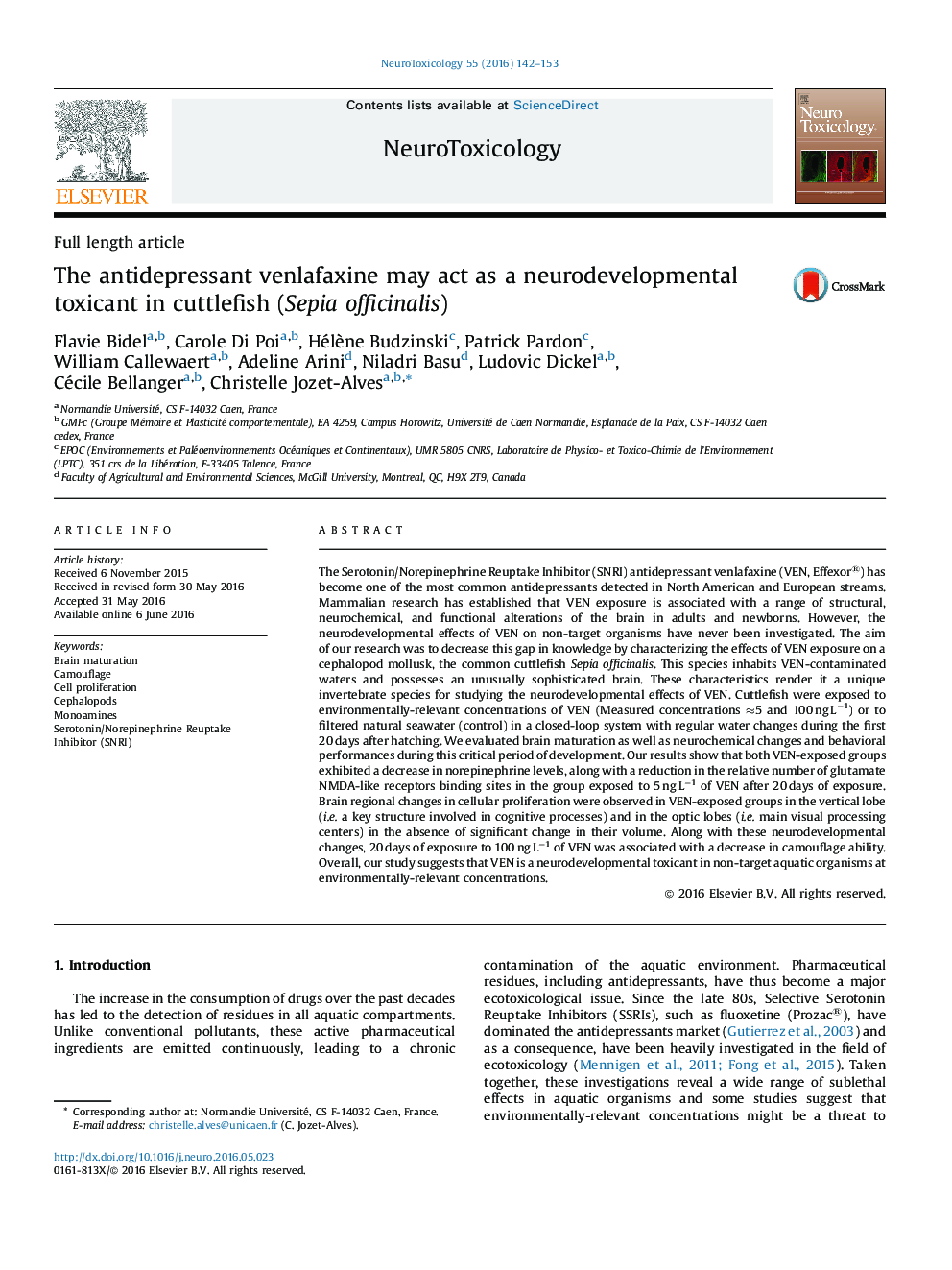| کد مقاله | کد نشریه | سال انتشار | مقاله انگلیسی | نسخه تمام متن |
|---|---|---|---|---|
| 2589452 | 1562039 | 2016 | 12 صفحه PDF | دانلود رایگان |

• Low doses of venlafaxine (VEN) induced sublethal changes in juvenile cuttlefish.
• VEN can be associated with brain neurochemistry changes.
• VEN modulated cell proliferation in a brain region-dependent way.
• VEN might modulate brain architecture.
• Neurodevelopmental changes were associated with a decrease in camouflage ability.
The Serotonin/Norepinephrine Reuptake Inhibitor (SNRI) antidepressant venlafaxine (VEN, Effexor®) has become one of the most common antidepressants detected in North American and European streams. Mammalian research has established that VEN exposure is associated with a range of structural, neurochemical, and functional alterations of the brain in adults and newborns. However, the neurodevelopmental effects of VEN on non-target organisms have never been investigated. The aim of our research was to decrease this gap in knowledge by characterizing the effects of VEN exposure on a cephalopod mollusk, the common cuttlefish Sepia officinalis. This species inhabits VEN-contaminated waters and possesses an unusually sophisticated brain. These characteristics render it a unique invertebrate species for studying the neurodevelopmental effects of VEN. Cuttlefish were exposed to environmentally-relevant concentrations of VEN (Measured concentrations ≈5 and 100 ng L−1) or to filtered natural seawater (control) in a closed-loop system with regular water changes during the first 20 days after hatching. We evaluated brain maturation as well as neurochemical changes and behavioral performances during this critical period of development. Our results show that both VEN-exposed groups exhibited a decrease in norepinephrine levels, along with a reduction in the relative number of glutamate NMDA-like receptors binding sites in the group exposed to 5 ng L−1 of VEN after 20 days of exposure. Brain regional changes in cellular proliferation were observed in VEN-exposed groups in the vertical lobe (i.e. a key structure involved in cognitive processes) and in the optic lobes (i.e. main visual processing centers) in the absence of significant change in their volume. Along with these neurodevelopmental changes, 20 days of exposure to 100 ng L−1 of VEN was associated with a decrease in camouflage ability. Overall, our study suggests that VEN is a neurodevelopmental toxicant in non-target aquatic organisms at environmentally-relevant concentrations.
Journal: NeuroToxicology - Volume 55, July 2016, Pages 142–153